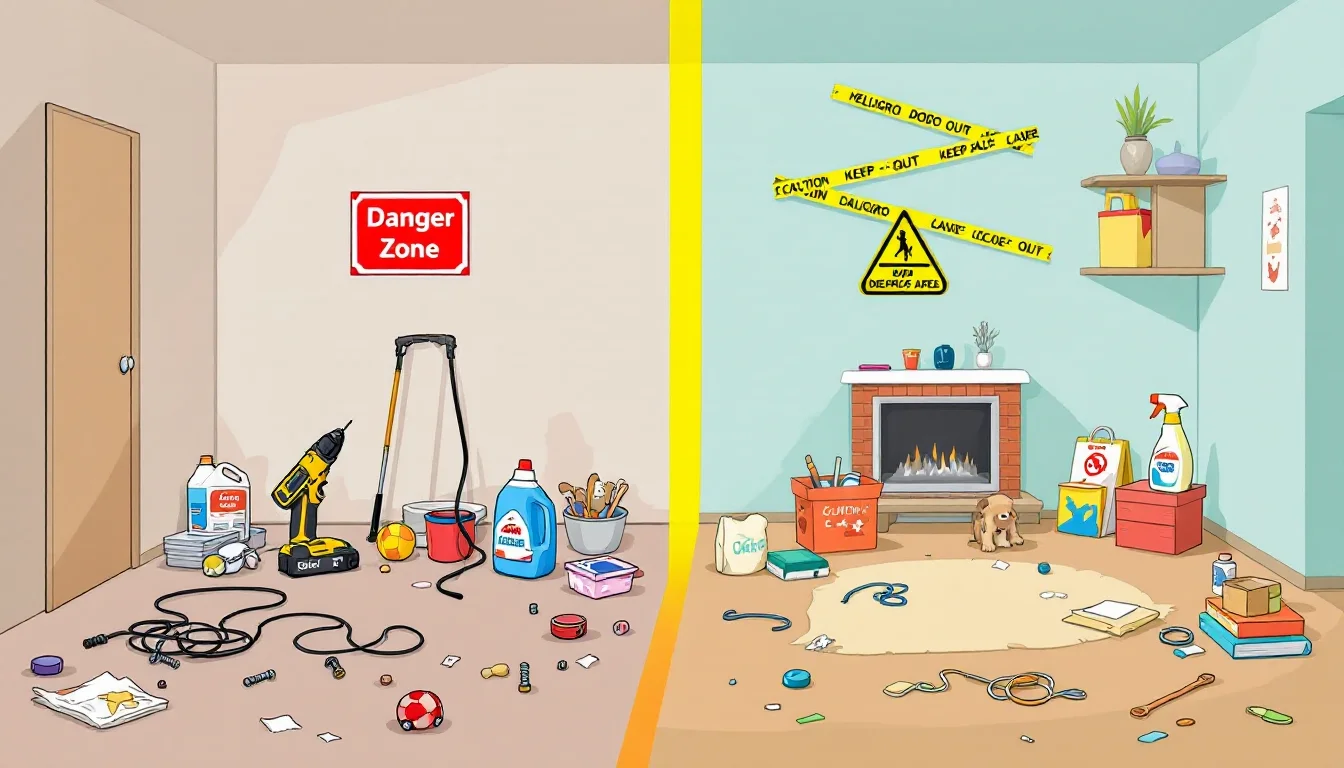Your home may feel like the safest place in the world—but for dogs, especially curious or energetic ones, it can be full of hidden hazards. From toxic foods to electrical wires, everyday household items can lead to unexpected injuries or health problems if you’re not careful.
In this article, we’ll show you practical, easy-to-implement strategies to keep your dog safe from common household accidents—so your furry friend can explore freely and safely.
Why Household Safety Matters for Dogs
Dogs are naturally curious. They sniff, chew, and investigate anything within reach. Puppies, in particular, love to explore with their mouths. While this behavior is normal, it can lead to serious trouble if they’re not supervised or if your home isn’t dog-proofed.
Accidents at home can lead to injuries, poisoning, or even emergency vet visits—so prevention is always better than cure.
Common Household Hazards for Dogs
Before jumping into prevention tips, let’s look at some of the most common dangers inside a typical home:
- Cleaning products and chemicals
- Human foods (like chocolate, grapes, onions)
- Electrical cords and chargers
- Sharp objects or small choking hazards
- Medications and cosmetics
- Open trash cans
- Toxic plants
- Loose wires or slippery floors
- Small spaces where dogs can get stuck
How to Dog-Proof Your Home Room by Room
Here’s a simple guide to creating a safe space in each area of your home:
Living Room
- Secure wires and cords: Use cord organizers or covers to prevent chewing.
- Avoid small decor items: Dogs might swallow small objects like figurines or beads.
- Keep remote controls and batteries out of reach: Batteries are toxic if swallowed.
- Watch out for candles: Never leave a lit candle unattended around a dog.
Kitchen
- Use child-proof latches: Install these on lower cabinets where food or cleaning products are stored.
- Keep trash bins closed: Dogs love garbage, but spoiled food and packaging can be harmful.
- Store food properly: Chocolate, onions, raisins, and caffeine are toxic to dogs—even in small amounts.
Bathroom
- Keep the toilet lid closed: Some dogs drink from toilets, which could contain harmful cleaning chemicals.
- Store medications safely: Even over-the-counter pills can be fatal to dogs.
- Don’t leave razors, cotton swabs, or cosmetics accessible.
Bedroom
- Secure wires and phone chargers.
- Keep jewelry, hair ties, and small items off the floor.
- Watch out for essential oils: Many are harmful to pets if ingested or absorbed through the skin.
Laundry Area
- Keep laundry detergents and fabric softeners out of reach.
- Don’t leave laundry lying around: Dogs may chew socks or underwear, which can cause intestinal blockages.
General Safety Tips for Every Dog Owner
No matter what room you’re in, these universal safety practices can help avoid many common accidents:
1. Supervise New Dogs Closely
If your dog is new to your home or still a puppy, supervise them as much as possible. You’ll learn their habits and be able to correct unsafe behavior early.
2. Crate Training for Safety
When you’re not home, a crate can provide a safe space for your dog. It prevents them from roaming and getting into trouble while unsupervised.
3. Use Baby Gates for Restricted Areas
If some rooms aren’t dog-safe, use gates to keep your dog out. This is especially helpful for rooms with stairs or fragile items.
4. Train Basic Commands
Commands like “Leave it,” “Drop it,” and “Stay” can help prevent your dog from chewing on dangerous items or running into risky areas.
5. Provide Plenty of Toys and Stimulation
Dogs get into trouble when they’re bored. Give them chew toys, puzzle games, or safe bones to keep their minds and mouths occupied.
6. Non-Slip Rugs and Mats
Slippery floors can cause joint injuries, especially in senior dogs. Place rugs or yoga mats on slick surfaces for better grip.
7. Be Cautious with Windows and Balconies
Make sure screens are secure, and avoid letting your dog near balconies or open windows—especially in high-rise apartments.
What to Do If an Accident Happens
Despite your best efforts, accidents can still occur. Here’s what you should do:
- Stay calm: Your dog will react to your energy.
- Call your vet immediately: For poisoning, injury, or ingestion of a foreign object.
- Use a pet first aid kit: Keep one in the house with bandages, antiseptic wipes, and other essentials.
- Don’t induce vomiting unless instructed: Some substances are more dangerous if brought back up.
Regular Maintenance for a Safer Home
Your dog’s environment changes over time—especially if you move furniture, bring in new products, or redecorate. Make it a habit to do a quick monthly safety check:
- Check for exposed wires
- Ensure trash cans are secure
- Replace worn-out toys
- Revisit cabinet locks and gates
Final Thoughts: A Safer Home Means a Happier Dog
Your dog relies on you to create a safe environment—one where they can explore, play, and rest without unnecessary risks. By identifying hidden dangers, dog-proofing each room, and maintaining a pet-safe routine, you protect your best friend from preventable harm.
A secure home doesn’t mean limiting your dog’s freedom—it means giving them the chance to live a healthy, happy life with confidence and safety.

Dedicated to sharing practical tips and accessible guidance on dog care, nutrition, safety, and daily routines for owners of different breeds. With a focus on promoting a safe, healthy, and happy environment for pets, the blog’s content covers breed-specific needs, home adjustments, energy levels, and wellness strategies for all kinds of dogs.
